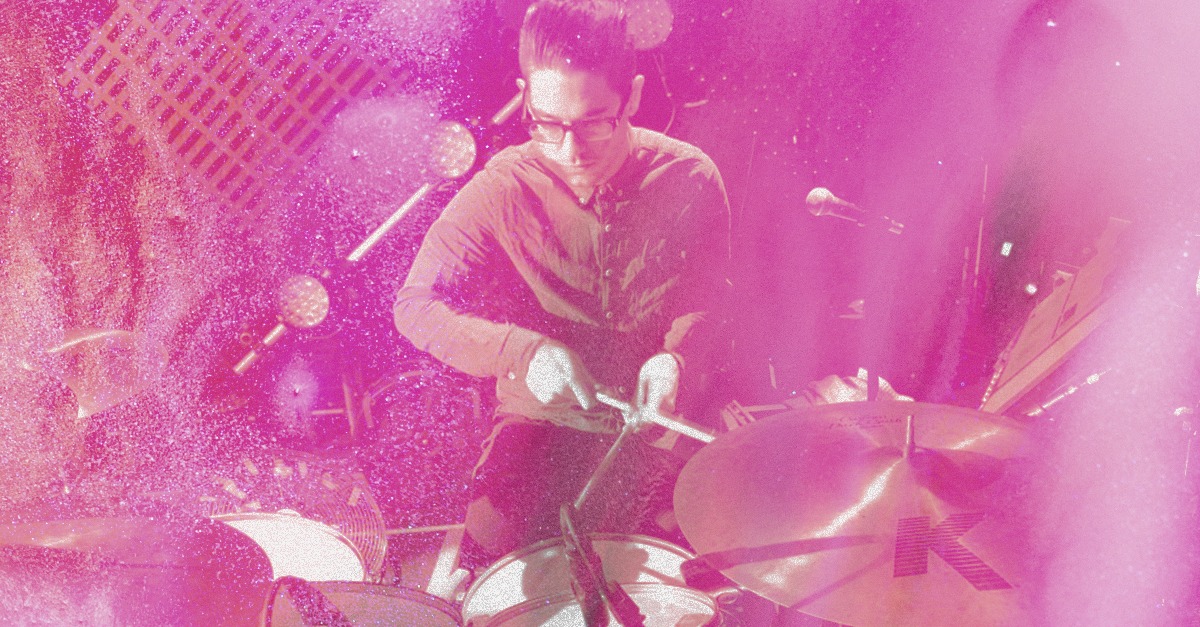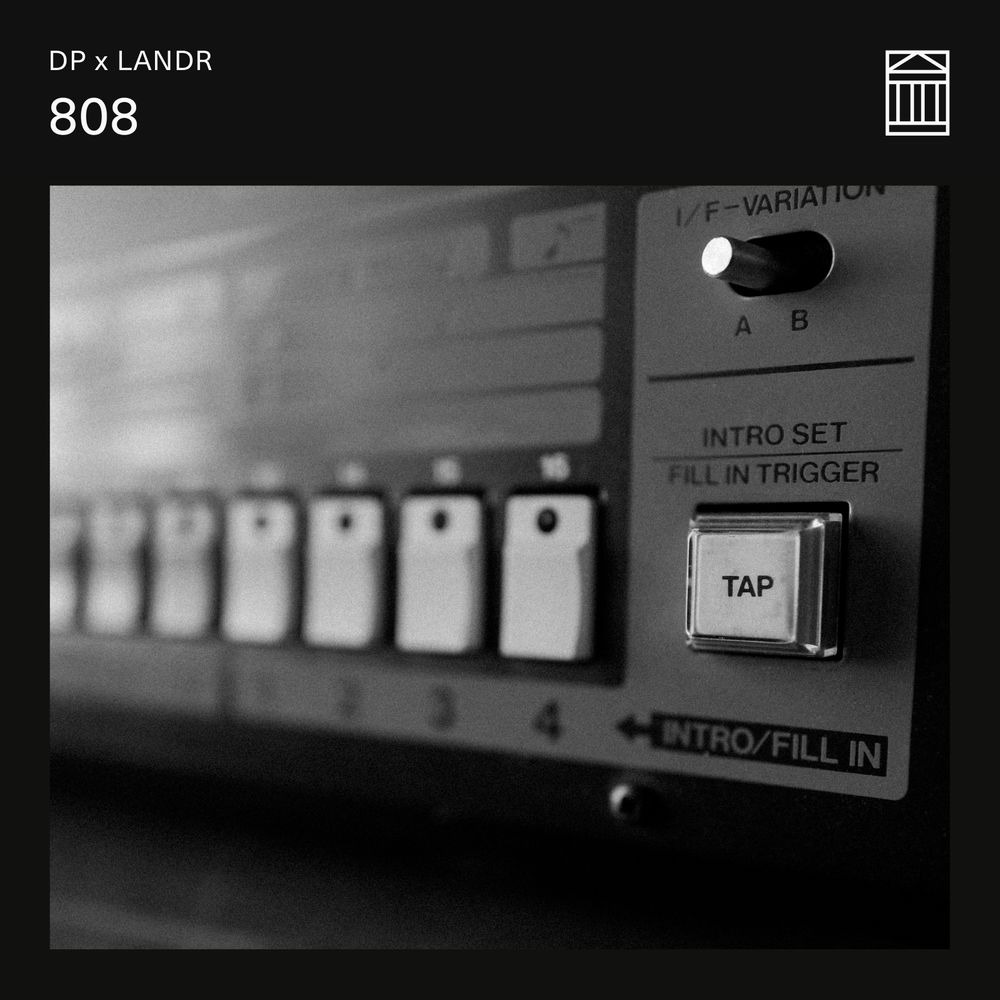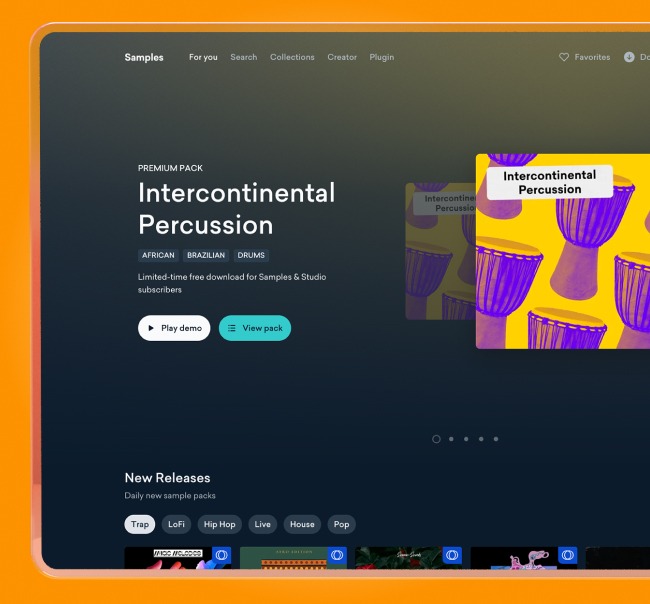Creating Unique Drum Samples With Ellie Goulding Drummer Joe Clegg

If you don’t know Joe Clegg, you definitely know his drumming.
The professional producer, session drummer has served as music director for Ellie Goulding having drummed multiple world tours and worked on her studio record.
He’s a veteran pro who knows what he’s doing in the studio—whether that be recording drums, producing with outboard gear or creating unique sound design with various drum machines and effects.
Recently, Joe released a series of sample packs with LANDR Samples—each pack focuses on putting classic drum machines through a series of outboard mixers, echo, delay, reverb and more.
The result is a uniquely rich sample pack that offers a brand new take on the sounds of classic drum machines like the TR-808, ELKA and CR78.
We were curious what Joe’s recording process for drums and sample packs looks like so we sat down with him for an insightful chat.
Here’s what we learned.

Getting comfortable with room sound
If you’ve ever recorded drums you know that the room you’re recording in will dramatically change the characteristics of your sound.
“It’s so specific to the material you’re working on, what is required. And it depends on the room you’re recording in too—drum choice, microphone choice, the way you play.”
For seasoned recording engineers like Joe, room choice is just as much a creative decision as tuning, dynamics and playing.
The key is understanding what sound you’re looking for going into a recording session. If you’re looking for a big boomy sound with tons of ambience—you’ll need to look for a large room.
Joe shared his experience working on a Focusrite promotion video that was recorded in an old Victorian Mill with 20 foot high ceilings.
“Huge brick walls, big glass windows—sound could travel a significant distance. So the ambient sound of that room was amazing and I found myself leaning on the room mics—it was incredible.”
Small spaces are just as good (and maybe better)
You don’t need a huge, expensive room to get great drum recordings.
In fact, Joe thinks that a dry small room sound is becoming increasingly trendy.
“That tight and dry 70s drum sound seems to be more desirable right now, it’s the trend currently to have stupid dry sounds.”
Joe’s main space today is a fairly small setup compared to larger rooms he’s recorded in before.
“In [my current] space it’s smaller and I’m doing more remote tracking from here. The smaller space is actually making me pay more attention to what the room mics and overhead mics are actually doing”.
He feels that the tight and dry sound of a small space actually helped him learn more about the intricacies of recording drums.
“In a small space I have to be more accurate with my microphone placements and choices—it’s actually been useful to help explore myself as a musician in a creative way.”
Clegg’s current mic setup includes overheads, floor mics and an omnidirectional condenser room mic.
“Adding in, I’ve got some 404s mid way down the room, only five feet away from the kit. And then a monotube mic using a figure 8 pattern so you’re getting distance in the room.”
He’s also added baffling behind the kit against the wall and draped a duvet over top to help with cutting down high-end reflections.
Working with the limitations and controlled sound of a small room has been a boon to his workflow of late.
“This smaller space is really helping me become a better engineer and player.”
Adding color and space with outboard gear
Over the years Joe’s music production needs and tastes have evolved. Initially, it was all about vintage drum gear and keeping a number of rare kits around the studio.
But over time he discovered that something was missing—he felt that his recordings needed extra depth that he couldn’t find using just mics and drums.
Joe realized he needed to get his hands on a few select pieces of outboard gear to give him more control over the effects and overall grit of his recordings.
“I got to a point where I’d amassed a huge collection of vintage drums, but they just sat there on the shelf while I played shows all year. So I sold one of my favorite kits—a 1950s Slingerland radio king, just a beautiful kit that I’d never played professionally once—and I bought my first foray into outboard, a 70s Roland PA mixer.”
After getting to know how the PA mixer worked, Clegg found that among other things it really helped with adding a crunch that he couldn’t achieve in his typical recordings.
“So I’ve got this six channel PA mixer—it’s got a stereo output and you sum through it, it’s got attenuation and EQ on it. When you drive drum machines through it crunches in a beautiful way, and it’s got a spring reverb inside it which was the spring that Roland made that became the RE-201.”
The vintage PA mixer spurred on a handful of future purchases—including a set of other spring reverbs with different characteristics, delays, chorus and more.
“I got this Japanese Horck Stereo Spring reverb, and I got an ASON mono tape echo.”
The main advantage of using outboard that comes with a higher price tag?
Clegg says it’s the added level of tactile response and analog sound they produce.
“That really was the catalyst for me as a tactile person, to understand exactly what happens with an RE201. It’s such a musical piece of gear, you can ride the intensity and the repeat rate and make really musical things.”
Re-imagining classic drum machines with outboard gear

Aside from his recording work in the studio and performance on the road with Ellie Goulding, Clegg creates sample packs for LANDR Samples.
Interestingly, much of his learnings in the recording studio translate into his process for producing sample packs.
For Clegg, it’s all about re-thinking familiar drum samples by adding unique characteristics that producers might be surprised by.
“All drum machines of all time have been sampled, right? And they all mostly sound great. So the question was what can I do that I really like and I’ve been using on tracks that I’ve been making.”
His process involved taking clean samples from vintage TR-808, ELKA and CR78 drum machines.
“So I went there and did four days of just sampling drum machines. I took a clean sample through their Neve of those machines—the 808, CR78 and this really cool ELKA.”
With the clean sound, Clegg sends his mixer through a personally curated signal chain.
“I just picked outboard units I wanted to sample though and let those patterns through the machines.”
For example, Joe wanted to add a level of crunchiness you wouldn’t expect out of an 808 sample.
“So with the 808s it’s re-amped through a 50s Magnatone amp, through some crusty ribbon mic and then back into the Neve. When you search for 808s you don’t hear weird and distorted and echoed sounds.”
Clegg understands that his sound design process might be a little bit experimental and challenging for a producer to naturally look for—but that’s also what makes these samples so exciting.
“Ultimately what I’m doing is a bit more niche in a way. You might not want to hear all distorted 808s on your next trap record. But, throw in one of those claps and it would be something completely unique within that and totally fit within that genre.”
To Joe the idea is simply to create sounds that might catch the ear of the producer and inspire creative, out of the box thinking.
“You could come across one of these samples and say ‘oh wait that 808 hat is not what I expected and it sounds completely cool!”



Let your influences feed creative discoveries
When all is said and done, Joe equates his journey of learning music production, recording and sound design with his lifelong passion for music and learning how it’s made behind the scenes.
For Clegg, two drummers stick out to him as inspirations for both his playing and production style—Darren King of MUTEMATH and legendary session drummer, Matt Chamberlain.
It’s valuable when artists let their style bleed into the music they produce, it’s something that Clegg appreciates and tries to emulate in his own work.
To him, Darren King is a drummer that completely embodies this.
“Most drummers reference point for drummers my age could be Darren King with Mutemath. I heard the Reset EP and the track called Chaos on there literally knocked me sideways. Just the sampling and playing, great melody and hearing things he produces now just sounds like him—I really love artists who have a very visible sonic personality.”
Get obssessed with your favorite artist’s process
It was Clegg’s first encounter with a Matt Chamberlain track that changed his outlook on drum production.
“My favorite Drummer is Matt Chamberlain, he’s played on hundreds of records. I came across a record from Sarah Bareilles, Little Voice was the name, and the drumming…—the tonality of the kick and snare I needed to know which person is playing.”
To the average listener the track sounds like a fairly standard pop track, but something about Chamberlain’s tone and playing style caught Clegg’s ear and made him want to know more.
“So, I deep dived and discovered all his work—hundreds of records, Bowie… whatever! I don’t know if it’s just me but I felt that I could tell it was him playing—because of the way his kick and snare sounds.”
Clegg researched what exactly Chamberlain was doing to get the tone he liked so much and eventually learned what was going on behind the scenes to get that specific sound.
Ultimately this discovery process changed Clegg’s drum production style.
“If you hear that you’ll hear that influence in my own sound. The landscape he creates, for me, it blew my mind.”
This kind of learning and discovery process is so important for anyone who wants to develop their music production skills—know what you like and learn how they made it.
All it takes is some time spent researching what tools and techniques were used to make the sound that caught your attention.

